Gear Suggestions for an Appalachian Trail Winter Thru-Hike
The gear you need for an Appalachian Trail winter thru-hike is different from your standard summer gear list. Take it from me: I thru-hiked NOBO between February 3rd and June 9th in 2018. I experienced temperatures in the teens, three weeks of snow, freezing rain, and some of the best hiking ever.
If you have your sights set on an Appalachian Trail winter thru-hike, section hike, or even just an overnight, this article will help you figure out what to bring.
Backpack: Winter Gear is Heavy and Bulky
I’m a huge fan of ultralight, and I’m happiest when my base weight is below ten pounds. Unfortunately, this isn’t really practical when you’re dealing with the cold. Winter sleeping bags are heavier and bulkier than a summer quilt, and you need more layers.
I was able to keep my base weight below fifteen pounds, but I still needed a pack that had a higher capacity than normal. I used a Zpacks Arc Haul and found that 62 liters was large enough. If you’ve primarily hiked in the summer, make sure your normal pack is large enough to hold your winter layers.
Layers
Colder weather obviously means you need warmer layers. You want to be able to add and remove layers throughout the day. Sweating makes you colder, so having the ability to shed layers as the day warms up is crucial. I hiked in a thrift store dress and leggings: my standard summer hiking outfit.
Over that, I layered a thrift store microfleece (similar to this one) or a Smartwool midweight base layer depending on the temperature. On really cold days, I would hike in both.
I used Frogg Toggs as a waterproof layer for wind, rain, and snow. I was happy with my layers, but I have since acquired a coveted Melanzana hoodie which is now my go-to winter layer. The micro-grid breathes better than standard fleece, and I also love that the hood covers almost as much of my face as a buff.
In camp, I wore a Montbell Ex Light Down Anorak, although any lightweight puffy such as the Ghost Whisperer would work well. On really cold days, I used my sleeping bag as an extra layer. I would either wrap it around me like a blanket or just get straight in my bag as soon as I got to camp.
I also carried a wool hat, buff, and gloves.
Footwear
Footwear is something I still have a lot to learn about. I hike exclusively in Altra Lone Peaks because their wide toe box and zero drop is the only thing that helps me avoid blisters and plantar fasciitis. I was hesitant to switch to waterproof boots since I knew I’d have to deal with foot issues as a result. Waterproof boots and shoes are also difficult to dry when wet.
As a result, I mostly just dealt with wet feet and frozen shoes in the morning. This did lead to a few nights where my feet were wrinkled, red, and burning, and I worried that I was getting trench foot. I tried to prevent this by wearing bread bags over my socks during the day to keep snowmelt out (which does not work as they always rip) and drying and warming my feet at night. The temperatures were never cold enough for me to worry about frostbite, and I was constantly moving except in camp, so my feet stayed warm.
Since my shoes were not waterproof, I carried a lot more socks than I normally would. I would wear a fresh pair each day, which would be soaked by camp. I would change into sleep socks at night. If I was lucky, I could put on wet socks the next day. If I was unlucky, they would be frozen solid and I’d have to dip into my supply of dry socks. I carried four pairs of socks- three to hike in and one to sleep in. On my next winter hike, I will take even more dry socks. Darn Toughs are my favorite since they are wool and have a great lifetime guarantee.
For my next hike, I’d like to try waterproof socks. If that doesn’t work, I guess I’ll just have to switch to waterproof boots and deal with the blisters.
Traction Devices and Snowshoes
I carried Kahtoola Microspikes. I only had to use them a few times, but they were worth the weight on days with freezing rain or where the trail was icy.
At no point on my thru-hike did I need snowshoes. There were a few days where I hiked through knee-deep powder, and I occasionally encountered thigh-deep drifts. However, the trail was always passable without snowshoes. If I had started earlier or hiked faster, it’s possible I would have needed them further up the trail. Snowshoes are heavy and difficult to strap to a backpack, so they are inconvenient to bring “just in case”.
Tent vs. Shelter
I almost exclusively stayed in shelters. I never worried about space in shelters as there were few people on trail. A tent may have been warmer some nights, as it would have blocked more of the wind and retained my body heat better, but I found the convenience of not having to touch cold metal poles and tent stakes in the morning worth the trade-off. I did bring a tarp for when I didn’t want to stay in the shelter. It was useful on breezy nights when I strung it over the shelter entrance to block some wind.
If you plan on using a tent, keep in mind that getting stakes into frozen ground or snow is almost impossible. This isn’t too much of a problem for a freestanding shelter, but if you use a tarp or non-freestanding tent, you might struggle. Snow stakes are an option. You can also learn how to make deadman anchors by filling plastic bags with snow or burying an object in a trench perpendicular to your tent.
Also keep in mind that in cold weather, condensation will likely build up in your tent overnight, even if you have a double-wall design. You’ll therefore need to take extra care to maximize ventilation and dry damp gear in the morning sun.
Sleep System
Your sleep system is important to get right. Get it wrong and you will find yourself running to town every time the temperature dips below your bag rating or dropping hundreds of dollars on a new, warmer bag. Keep in mind that many bags are rated for survival rather than comfort, so if you’re spending a night out at 20 degrees, you’ll shiver all night in a 20F bag.
I used a Zpacks Classic Sleeping Bag rated 5F (this is no longer offered by Zpacks. A 10F bag is now the warmest available). This was warm enough most nights, and other hikers around me used 0F bags without issues. If I had started earlier, or hiked faster, a -20F bag would have been necessary. These bags are much heavier and more expensive.
I used a Therm-a-Rest RidgeRest SOLite as my sleeping pad. With an R-value of 2.1, this is not a particularly warm pad. The Therm-a-Rest NeoAir Xlite is a thru-hiker favorite that is much warmer, with an R-value of 4.2. I likely would have been much warmer at night with a better pad, but I liked the price of the RidgeRest.
Booties, Nalgenes, and Handwarmers
If your sleeping bag isn’t warm enough, there are a few things you can do to help. Down booties are one of my favorite pieces of winter gear since my feet tend to get cold at night. They’re also great if you have to pee during the night since you don’t have to jam your feet into frozen shoes. I would both sleep in and wear my booties around camp in the evenings, which was great if my shoes were wet.
On really cold nights, I used a Nalgene full of hot water and a chemical handwarmer inside my sleeping bag. The Nalgene stays warm for a few hours, by which point the handwarmer has started to kick off heat. The Nalgene also means you have unfrozen water to drink in the morning. I found placing these objects on my inner thighs kept me warmest, although around my core and in my armpit also helped a lot.
Water Treatment and Bottles
Speaking of Nalgene, I found hiking with one helpful on the coldest days. Smartwater bottles with a sports cap are my normal go-to, but they freeze quicker than the Nalgene’s wide mouth. I also don’t trust Smartwater bottles not to leak if I sleep with them. Nalgenes are leak-proof, which is reassuring when you need to keep your sleeping bag dry at all costs.
I used a Steripen Ultra as my water treatment. While cold can drain batteries faster, I did not have to worry about it freezing, which was a nice reassurance. Freezing temperatures can damage filters such as the Sawyer Squeeze, so if you normally use a filter, make sure you sleep with it and keep it inside your jacket on really cold days. Chemical treatment is another winter-proof water purification option.
Stove
The Jetboil Flash is my go-to stove for its convenience and speed. Isobutane-propane stoves are less efficient in the cold, and my stove had a disconcerting tendency to produce small fireballs when I lit it on very cold mornings. It was never so cold that it didn’t work, but if temperatures had been much colder, it would have struggled. Winter-specific stoves are too heavy for me to consider them for a thru-hike.
Electronics
I mostly used Guthook to navigate, which was helpful when the trail disappeared beneath snowdrifts. This did mean I had to be very careful to keep my phone as warm as possible. I kept it inside my jacket and slept with it and my backup battery every night.
I used a decade-old version of the rechargeable Petzl Tikka headlamp. A good headlamp is crucial with winter’s short days. It was bright enough for both night hiking and camp chores, and the red light setting was nice for reading in my sleeping bag on long nights. Rechargeable was also great since I was already carrying a battery bank for my phone.
Choosing gear for a thru-hike is challenging enough, but adding in below-freezing temperatures makes it even harder. Hopefully, the above suggestions will help you get out on the AT this winter and stay warm. Still not sure what to bring? Check out my complete Appalachian Trail winter thru-hike gear list below for specific recommendations.
Appalachian Trail Winter Thru-Hike Gear List
Big Three
Sleep
- Therm-a-Rest RidgeRest SOLite
- Mountain Laurel Designs Bug Bivy
- Zpacks Pillow Dry Bag
- Down booties (no longer made, but similar to these)
Clothing
- Dress (thrift store)
- Leggings (thrift store)
- Thrift store microfleece (similar to this)
- Smartwool base layer
- Darn Tough socks
- Montbell EX Light Down Anorak
- Frogg Toggs Ultra-Lite rain jacket
- Altra Lone Peaks
- Dirty Girl Gaiters
- Wool hat
- Buff
- Fleece gloves
Kitchen
First Aid
- Ibuprofen
- Band-aids
- Leukotape
- Lighter
- Needle
- Floss
- Neosporin
- Small bottle of hand lotion
Other
- Kahtoola Microspikes
- Phone with Guthook
- Battery bank and charger cables
- Petzl Tikka headlamp
- Cheap gas station sunglasses
- Toothbrush and toothpaste
- Small hand sanitizer
- Trash compactor bag pack liner/rain skirt
- REI Traverse trekking poles
Related
Featured image: Graphic design by Sophie Gerry.
This website contains affiliate links, which means The Trek may receive a percentage of any product or service you purchase using the links in the articles or advertisements. The buyer pays the same price as they would otherwise, and your purchase helps to support The Trek's ongoing goal to serve you quality backpacking advice and information. Thanks for your support!
To learn more, please visit the About This Site page.

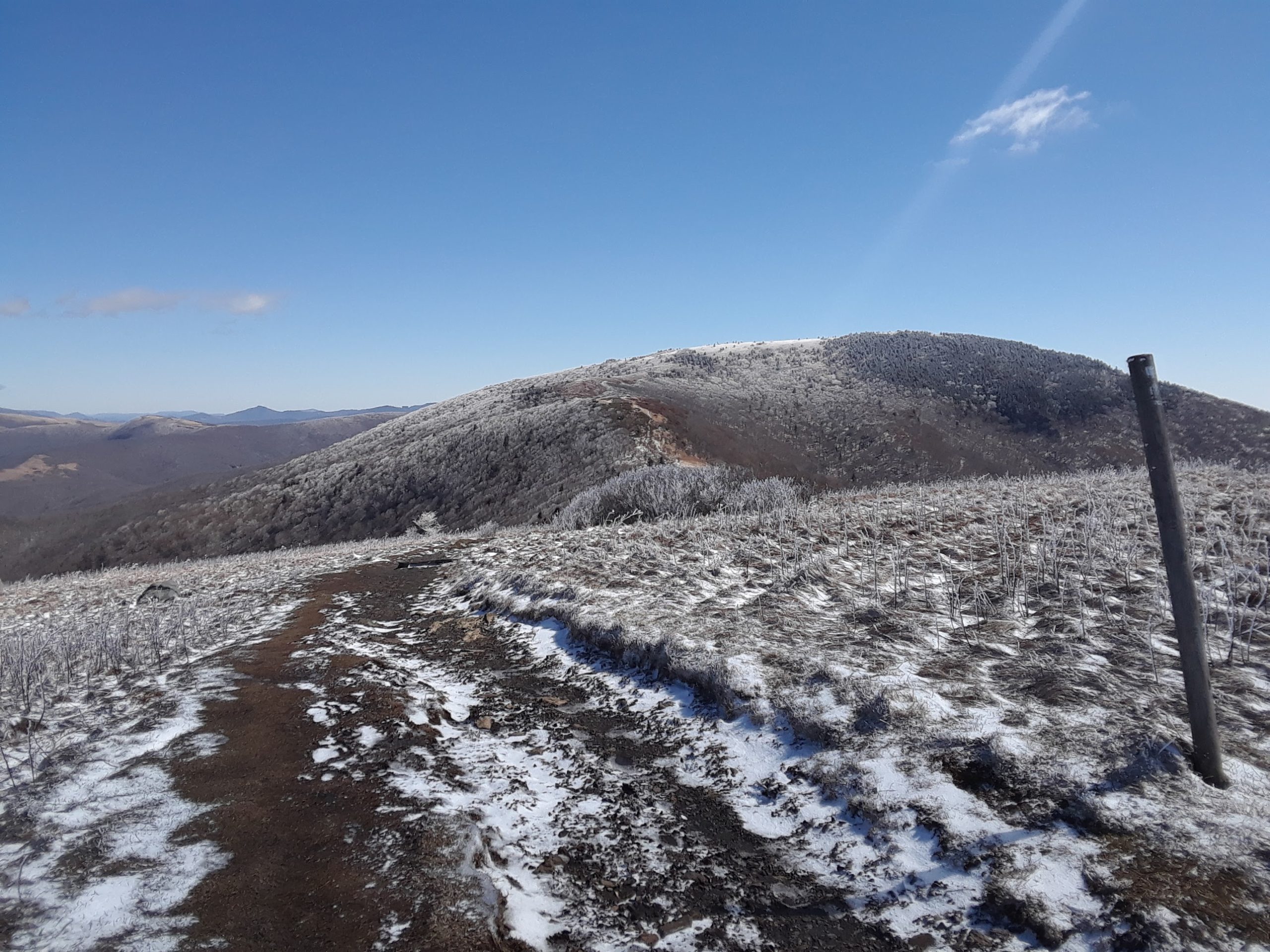




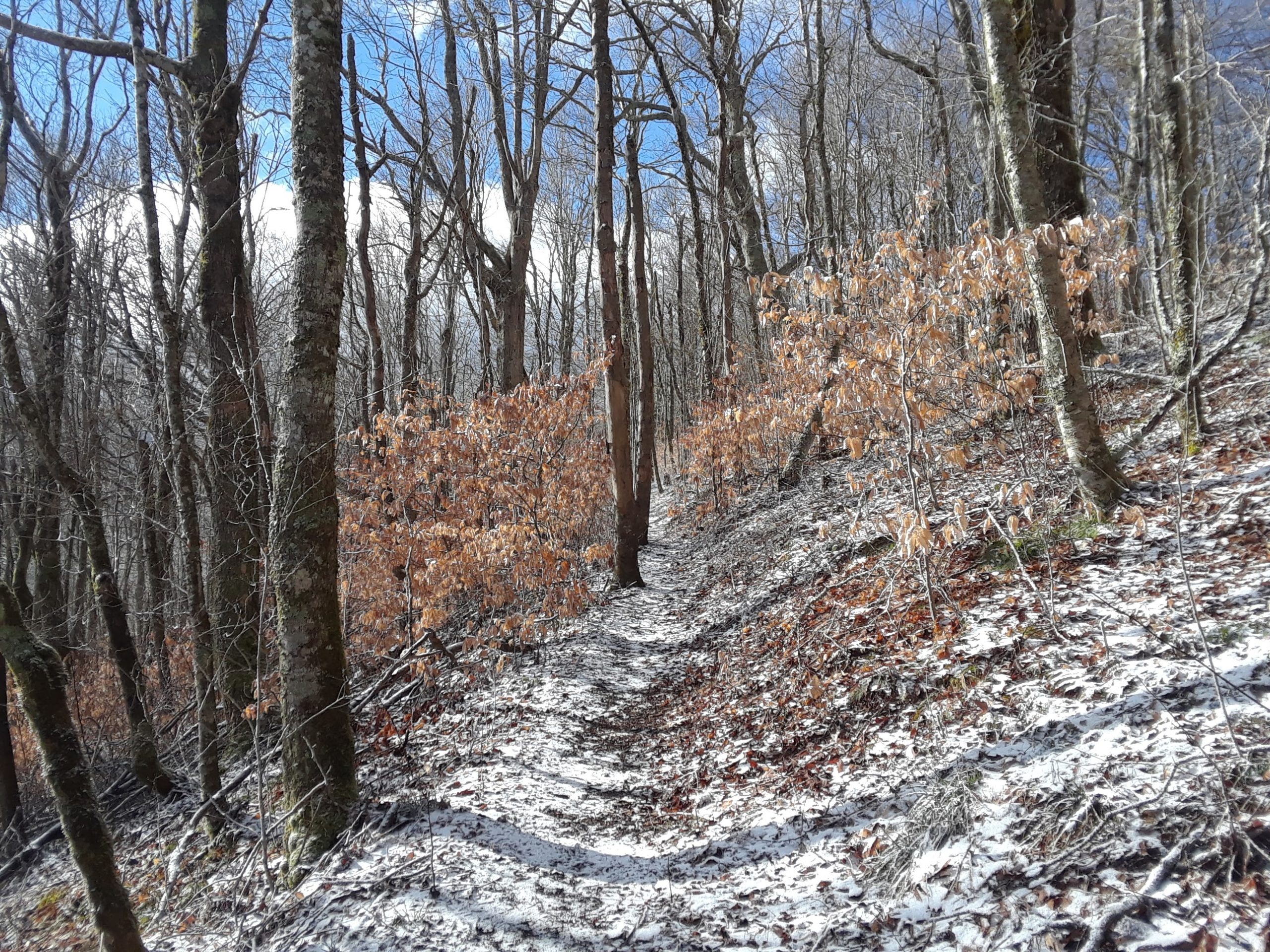

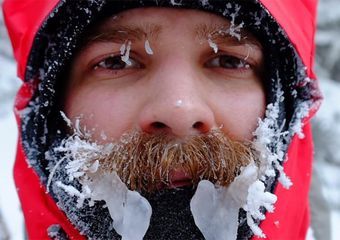
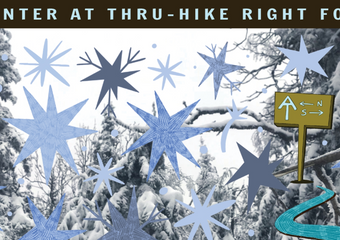
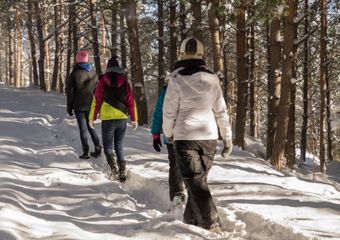

Comments 24
This is some terrible advice
Sorry you think that. It’s worked great for me on my very successful winter AT thru hike and for a bunch of winter backpacking in Alaska and Canada. If you have better advice, I’d love to learn more!
Sorry to busy hiking to write.
What an unkind and unnecessary thing to say. As Eloise said if you have better advice or have extensive winter backpacking experience and expertise then I’d like to see you write something of this magnitude and quality. I’ll wait.
Thank you SO much for such a thoughtful and informative piece, I gained a lot from reading this and feel a lot less overwhelmed now moving forward with gear as I am new to winter backpacking. As you mentioned above, a 20-degree sleeping bag will not be sufficient when going on the trail in the winter months. Do you think getting a sleep liner could be a sufficient alternative to getting a 0 or 5-degree bag? I’ve heard great things about the Appalachian Gear Company’s sleep liner. According to a recent gear review in Backpacker magazine, they said that liner, in particular, can add 15 degrees of warmth to one’s bag. I wasn’t sure if this would be an effective alternative or if it’s better to just get the 0-degree bag and then switch it out to the 20-degree bag once the weather warms up. Thank you again for such a thorough and helpful article, I really appreciate the time you put into writing this and am looking forward to testing out some of this gear!
Thank you for the kind words Shannon! It means a lot!
Personally, liners do not work for me at all. I toss and turn a lot and they always end up around my knees. I do have some friends who use them, mostly to keep their sleeping bags clean, but they are not for me personally 🙂 Liners are normally pretty inexpensive (especially in comparison to a zero degree bag!) So if you already own a twenty degree bag, I’d recommend testing it with a liner over the winter to see if you’re going to be warm enough or not.
I’m not sure how fast you’re planning on hiking, but I never switched out my five degree bag for a summer bag. If you’re still out in July or August and already own a summer bag, it might make sense, but I was finished by mid June, and the hassle of buying another bag and shipping it home was just too much. I actually still use my five degree bag in the summer and took it on my August Long Trail hike last year (because I was too cheap to buy a different bag, haha). As long as your bag has a full zipper, you can use it like a quilt in the summer, and because I got such a light bag, I never minded the extra weight.
Please please please keep asking questions, especially as you get closer to your start date! I’m really excited for you!
Thank you so much for your thorough and thoughtful response, I know I sound like a broken record, but I sincerely appreciate your time and help especially as a novice winter backpacker! You bring up a great point about the pitfalls of a sleep liner and how it may inadvertently move around at night thus become useless. I tend to move around quite a bit in my sleep as well so I may run into this issue as well. Admittedly, I was looking for an inexpensive alternative to purchasing a 0/5 degree bag since I know they can be quite expensive but at the end of the day, it sounds like a worthwhile investment for winter backpacking and I may be moving out West to Montana for work in the future so it definitely makes sense to have a 0/5 degree sleeping bag for winter camping/backpacking out there! That’s also great to know that you didn’t find your 5-degree bag too warm during the summer months. I’m super impressed that you completed your thru-hike by mid-June, that’s awesome! I know I won’t complete it as quickly as you so I will inevitably be hiking in July and August so as you mentioned using my bag as a quilt is a nice alternative to switching out bags especially near the end of my hike. Did you find that you had to switch out your clothing when the weather warmed up? I’m in the process of researching and investing in some new clothes and am trying to find some quality gear that will work universally regardless of the month and temperature, within reason of course, as I know one wouldn’t necessarily need a down jacket in the middle of July. I really appreciate any recommendations regarding that or if the pieces you already recommended above would be sufficient year-round. Thank you again for your time and help and I apologize for my long message!! 🙂
I didn’t ship too much home- my fleece, my microspikes and my down booties were the main thing. That’s about all I’d change from my summer gear. I carry my puffy even in the summer- the sections above treeline can get pretty chilly, and it would suck to need it on Mt Washington or somewhere and not have it. My puffy is really light, so it doesn’t add too much weight or bulk to my pack.
Montana is pretty great! I hope you’re near glacier!
Great article! Im planning a late february thruhike and just thinking about the cold temp logistics is overwhelming at times. A couple questions. When you sleep with your electronics or filter at night, where do you put them? Just in the bag with your or up against your body? Also, did you have sleep clothes? Thanks a bunch! -Dandelion
I just sleep with everything in my bag with me- it normally goes around my feet, except for my headlamp, which is up near my head so it’s easier to grab in the night.
I don’t use sleep clothes, apart from sleep socks- this is a bit controversial! I’m too lazy to want to put on cold clothes in the morning, and on colder days I don’t want to stuff my hiking outfit in my bag overnight to keep it warm, since it’s already pretty full of electronics, water, etc. I have enough layers for my top half that I always have something to change into if my shirt is wet, and my pants were never wet above the shin, so I didn’t mind sleeping in them. If I had gotten them soaked (and I did once it warmed up in a couple of thunder storms), I’m not too proud to just sleep in my underwear. This 100% does not work for everyone- my husband has to have sleep clothes, otherwise he gets rashes, and a lot of people really love putting on comfy clothes at the end of the day. It will also keep your bag cleaner if you’re worried about that.
How do you keep your phone from getting too cold and draining the battery like crazy? When my fiance and I section hike/camp in the colder weather, we both end up having the same issue (2 completely different phones). We put our phones into airplane mode, sometimes even turn them off for a large portion of our hike and our phones will go from 80% charged to dead in a matter of minutes some days. I’ve tried keeping the phone warm with my body heat and some days itll somewhat work but others it’s nearly impossible. What do you suggest would be a good solution?
I think it really depends on the phone as to how well it handles cold. I’ve never had too much of a problem with Android phones (normally cheaper models too), but I know iPhones in particular can have a lot of problems with the cold. I just keep mine inside my jacket at all times, and then in my sleeping bag at night. It’s always in airplane mode too, so I’m not doing anything too different to what you’re doing. Sorry, that’s not particularly helpful!
Are you carrying a back up battery? I know sometimes if you warm up your phone and plug it in, it will go back to being at least half charged pretty quickly.
I’m about to head out for a week of winter hiking with my phone in some pretty cold temperatures- I’ll let you know if I learn anything else!
The company Lander sells a phone case model called the “Moab” that they market for “outdoors” with something they call “Thermoline” which is supposed to be insulation for your phone. The Amazon reviewers seem to like it, at least. REI sells them.
As a larger than 6′ person, I couldn’t confine my winter gear to a 60 liter pack. Bigger folks wear larger sized clothing than you and need XL sized sleep gear that all takes up significantly more cubic space. We tend to eat larget portions of food as well.
Size matters and a disclosure addressing this fact would be worthy. That said, your other suggestions are on the mark.
I’m here to give you hope that it can be done! Gear is definitely larger and bulkier for bigger people, but if you’re willing to get lighter (and normally more expensive) gear, you can get your pack pretty small. My husband is 6’2″ and still uses his arc haul (the same type of pack as I used for my AT hike) for winter camping. He actually just packed it with a -20f bag and a weeks worth of food. It’s a bit more challenging for sure, but it is possible.
I learned about VBL socks from Phil Werner at SectionHiker. Same principle as bread bags, but durable. As he suggests, I wear VBL socks over liners, then put expedition weight hiking socks over that. (foot -> liner -> VBL -> thick sock -> shoe). The Rab VB socks weigh very little: 80 g for a medium.
Fantastic post to read as someone planning a future winter hike of the AT curious to know if you ever had any issues with your steripen, plenty of 1star reviews on REI saying things like “worked once” or “unreliable” so keen to get your opinion. Also what would you recommend for sleep system for starting a SOBO hike at the start of september, I lean more towards being a warm sleeper but it’s very difficult to get an accurate picture of winter temps. The average winter temp for the US generally seems to be 20F -6C it seems but that seems off to me based on winter thru hike gear lists.
I’m the wrong person to ask for an unbiased Steripen opinion! My husband and I (who share a lot of gear when we hike together, but never our water treatment) have gone through four Steripens over the course of our outdoor careers. I had my first for the entire PCT, CDT, and then up to McAfee knob on the AT. It fell out of my pocket and I was more upset about that than almost anything on my thru! Luckily, my now hubby came to visit the week after I lost it, and gave me his. I still use it today, three years later. He bought a replacement when he got home. That one died this summer, six days into a nine day canoe trip. It died because he left it on the outside of his pack, where it was constantly being splashed with water. Apparently six days of that is too much. Anyway, Katahdin replaced it for him for free, and so he’s on his second steripen. We use them year round, including winter camping when we’re melting snow. They’re great! I’ve never broken a bulb either, despite being really hard on my gear and having dropped mine several times. Make sure you get the ultra though- I’ve heard not great things about the other models. If you do get a dud, contact Katahdin! They were a little slow to replace ours, but that’s almsot certainly because we’re up in Canada and everyone’s dealing with lock downs.
I can’t speak to sleeping bags for that time frame, since I haven’t sobo hiked in the fall. I imagine you’d want a zero or ten degree bag though- unless you’re planning on hiking really fast, you might still be out in January in the south, which would give you similar winter weather to what I experienced in February. You might also experience some pretty cold temperatures in the Whites. I found that reading blogs of people who hiked around the time frame I was planning gave me a fairly accurate idea of the weather, although every year is a little different.
Leggings? And a dress? And Frogg Toggs? On your legs? That’s it? Why don’t you turn into a popsicle? So you know, I’m not being mean or snarky, I’m seriously interested in how the heck you survive wearing this little bit of clothing, being wet, in snow, etc. I would be hypothermic/dead. I’m kind of jealous, actually. 😉
p.s. I enjoy your writing style &, all your tips.
in the stove department, I think an MSR Whisperlite might be a better option for a couple reasons.
White gas works in low temperatures and the fuel bottle takes up less room than the propane cannister
JMO
One suggestion for wet boots is to carry a couple sheets or so of newspaper. Newsprint is super absorbent so that it can absorb ink. You can ball it up and shove it down into your boots and it will do a good job of drying your boots. If you carry it right it will be ready to reuse the next night. Be sure to use regular newspaper, not the glossy kind used in inserts and magazines. You can also use it for firestarter.